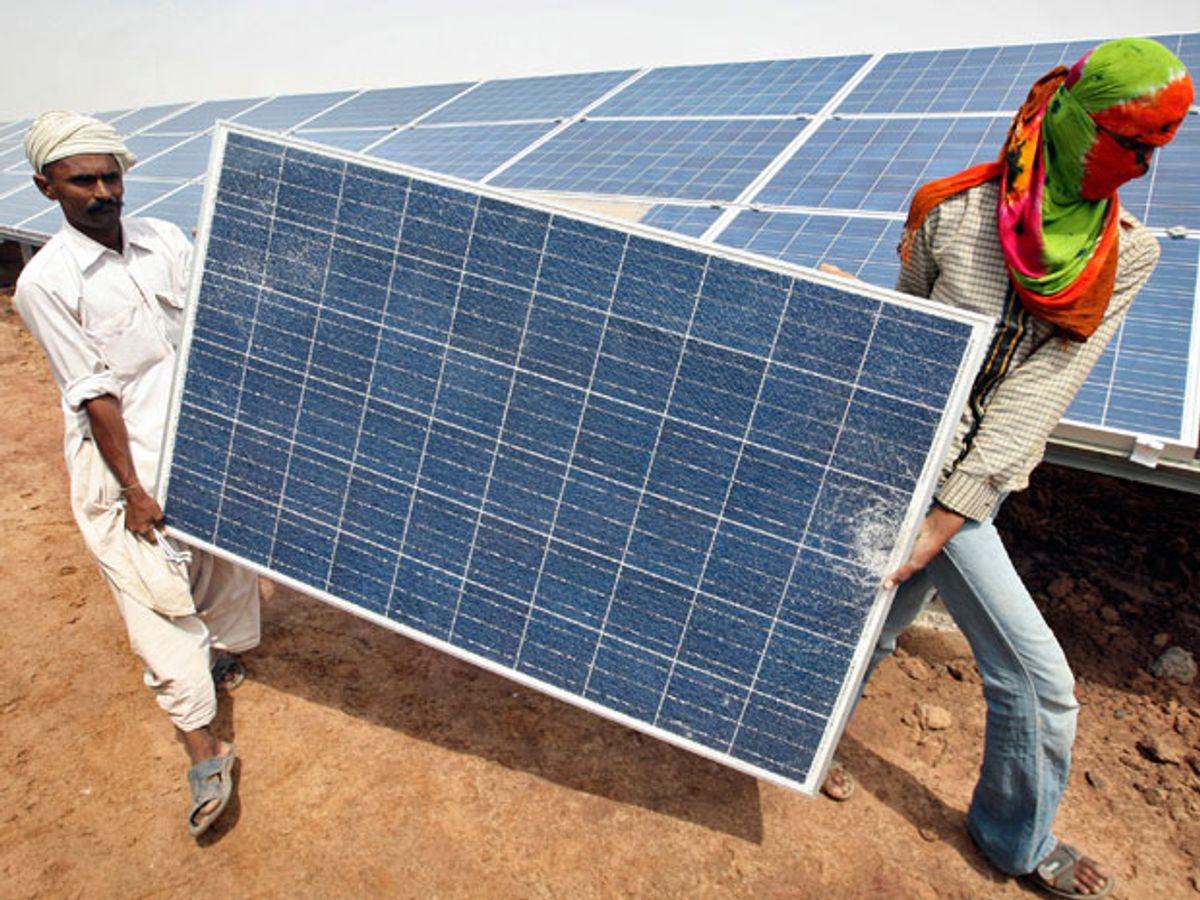India recently committed millions of dollars to solar power and grid improvements in an effort to provide electricity to more homes, according to Bloomberg.
Prime Minister Narendra Modi's government will spend 15 billion rupees (US$ 250 million) to increase solar power across the country and also to improve power delivery. Nearly 40 percent of India’s 1.2 billion people have no access to reliable electricity.
Two-thirds of the funds would go to various types of solar power projects. About $83 million would go to large solar power plants, and another $67 million would go towards 100,000 solar-powered irrigation pumps.
The investment in the pumps is just a fraction of the 26 million groundwater pumps that the Indian government wants to replace with more efficient solar-powered pumps. The power used for pumping irrigation water is also one of the largest strains on the Indian power grid. Earlier this year, Bloomberg reported the cost of 200 000 pumps would be $1.6 billion.
The government also recommitted to providing 24/7 power supply to all homes with an $83 million investment in feeder systems to bring electricity to rural areas. The program would mirror one that Modi instituted in its home state of Gujarat, according to Bloomberg.
In Gujarat, power feeder lines for farmers, which have substantial power needs, were separated from those that go to homes and villages. That allowed the state to provide more reliable electricity to most areas while also limiting the amount of subsidized power provided to farmers.
Some industry analysts question whether the budget allocation for this project would make a significant impact. Kameswara Rao, head of energy, utilities, and mining in India for PricewaterhouseCoopers LLP told Bloomberg that the funding needed to split off rural electricity supply was far larger than budgeted.
The efforts “are directionally correct but involve relatively small steps or lack specifics to support a meaningful improvement in the short-term,” credit rating agency Fitch Ratings said of the investment for India’s power sector. “There are entrenched structural issues affecting the performance of the power sector of India and the solution would require a sustained and disciplined policy focus.”
While India’s power sector suffers from an inadequate grid, there are also generation shortfalls that will not be helped by the funds committed to solar power and distribution upgrades. Fitch Ratings notes that there is a domestic shortfall for both coal and gas for power plants.
“The entire ecosystem of the power sector - from generation to distribution - needs to be strengthened,” Fitch analysts wrote.
Environmentalists were not pleased with the budget, calling for more distributed generation, rather than investment in large-scale solar plants and a continued reliance on coal that is fed into an inefficient grid.
"The steps on renewable energy and energy efficiency are not transformational,” Vinuta Gopal, head of climate and energy at Greenpeace India, told Reuters, “and the attempt to force fit coal production to clear the irrational power proposals is a signal that the reality of climate change has far from been recognized by this government.”



